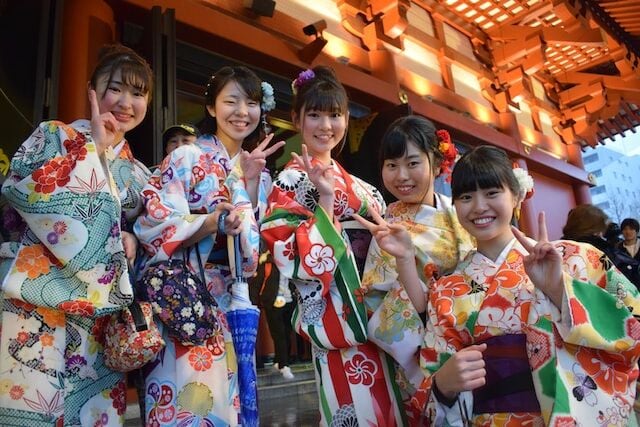
The kimono, a traditional Japanese garment, is renowned for its elegance and intricate beauty. Its flowing lines and vibrant patterns have captivated people worldwide, leading to increased interest in wearing kimonos outside of Japan. However, this growing trend raises important questions about cultural appropriation. It’s crucial to approach wearing a kimono with sensitivity and respect, recognizing its deep cultural significance and avoiding its misuse as a mere fashion statement. This article will delve into the cultural context of kimonos, explore the complexities of cultural appropriation, and provide guidance on how to engage with Japanese culture authentically and respectfully.
This article will first examine the cultural significance of kimonos in Japan, highlighting their historical roots and social importance. We will then discuss the concept of cultural appropriation and how it applies to wearing kimonos. Subsequently, we will explore ways to engage with Japanese culture respectfully, emphasizing the importance of education, authenticity, and sensitivity. Finally, we will address common misconceptions and provide practical tips on avoiding the misuse of kimonos as fashion items.
Cultural Significance of Kimonos
Kimonos hold a profound cultural significance in Japan, representing centuries of tradition, artistry, and social values. They are not merely garments but embodiments of Japanese identity and heritage. The kimono’s history dates back to the 8th century, evolving over time to reflect changing social norms and artistic sensibilities.
Symbol of Identity and Status
Throughout Japanese history, kimonos have served as a visual representation of social status, occupation, and marital status. Different fabrics, colors, patterns, and accessories signified specific roles and positions within society. For example, noble families wore elaborate kimonos adorned with intricate embroidery and precious materials, while commoners wore simpler garments.
Ritual and Ceremony
Kimonos play a central role in numerous Japanese rituals and ceremonies, from weddings and coming-of-age celebrations to funerals and tea ceremonies. Each occasion calls for specific types of kimonos and accessories, reflecting the solemnity or festivity of the event. Wearing a kimono for these occasions is a way of honoring tradition and demonstrating respect for the occasion’s significance.
Kimonos and Cultural Appropriation

Cultural appropriation occurs when elements of a culture are adopted by members of another culture without proper understanding, respect, or acknowledgment of their original meaning and significance. Wearing a kimono outside of Japanese cultural contexts can be considered cultural appropriation if it lacks sensitivity and perpetuates harmful stereotypes.
Misrepresentation and Stereotyping
Wearing a kimono as a costume or fashion accessory without understanding its cultural context can contribute to the misrepresentation and stereotyping of Japanese culture. It reduces a complex and nuanced tradition to a superficial aesthetic, ignoring its historical and social significance.
Commodification and Exploitation
The commodification of cultural elements, such as kimonos, can lead to their exploitation and disrespect. When kimonos are mass-produced and sold as cheap fashion items, they lose their cultural value and become objects of commercial gain rather than expressions of heritage.
Respectful Engagement with Japanese Culture
Engaging with Japanese culture respectfully involves a genuine interest in learning about its traditions, values, and history. It requires sensitivity, humility, and a willingness to challenge one’s own biases.
Education and Research
Before wearing a kimono, it is essential to educate oneself about its history, significance, and proper etiquette. Read books, articles, and online resources from reputable sources to gain a deeper understanding of the cultural context.
Seek Authentic Experiences
Engage with Japanese culture through authentic experiences, such as visiting museums, attending cultural events, or learning traditional arts and crafts. These experiences can provide valuable insights into the richness and complexity of Japanese culture.
Support Japanese Artisans
When purchasing kimonos, consider supporting Japanese artisans and businesses that produce authentic garments with respect for tradition. This helps to preserve cultural heritage and empower local communities.
History and Traditions of Kimonos

The history of kimonos is intricately woven into the fabric of Japanese society, reflecting the country’s artistic sensibilities, social values, and historical evolution. Understanding this history is crucial for appreciating the cultural significance of kimonos.
Early Origins and Evolution
The earliest forms of kimonos emerged in the 8th century, influenced by Chinese clothing styles. Over time, kimonos evolved into distinct garments, incorporating unique Japanese elements such as the obi (sash) and the hakama (wide-legged trousers).
Regional Variations and Styles
Throughout Japan’s history, different regions developed their own unique kimono styles, reflecting local traditions and aesthetics. For example, kimonos from Kyoto are known for their elegance and refinement, while those from Osaka are characterized by their bold colors and patterns.
Modern Adaptations and Innovations
While traditional kimono styles remain cherished, contemporary designers have also incorporated modern elements into kimono designs, creating innovative and contemporary interpretations of this timeless garment.
Avoiding Kimono Misuse as Fashion
While appreciating the beauty of kimonos, it is essential to avoid their misuse as mere fashion statements. Treating kimonos with respect requires understanding their cultural significance and avoiding practices that trivialize or disrespect their heritage.
Avoiding Cultural Stereotypes
When wearing a kimono, avoid perpetuating harmful stereotypes about Japanese culture. Refrain from using kimonos as props for cosplay or imitating stereotypical Japanese characters.
Respecting Traditional Etiquette
Familiarize yourself with the proper etiquette for wearing a kimono, including the appropriate occasions, attire, and accessories. Avoid wearing kimonos in casual settings or for events where they are not culturally appropriate.
Supporting Ethical Production
When purchasing kimonos, prioritize ethical and sustainable production practices. Support Japanese artisans and businesses that prioritize fair labor standards and environmentally responsible manufacturing.
Conclusion
Wearing a kimono can be a beautiful way to appreciate Japanese culture, but it is crucial to approach it with sensitivity, respect, and a genuine understanding of its significance. By educating ourselves, engaging authentically, and avoiding cultural appropriation, we can celebrate the artistry and heritage of kimonos while honoring the traditions they represent. Remember, cultural engagement should be a journey of learning, appreciation, and mutual respect.
